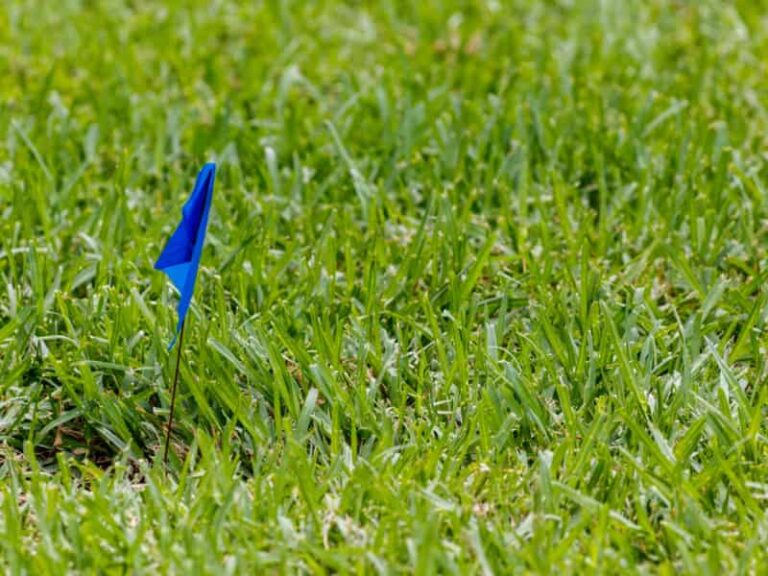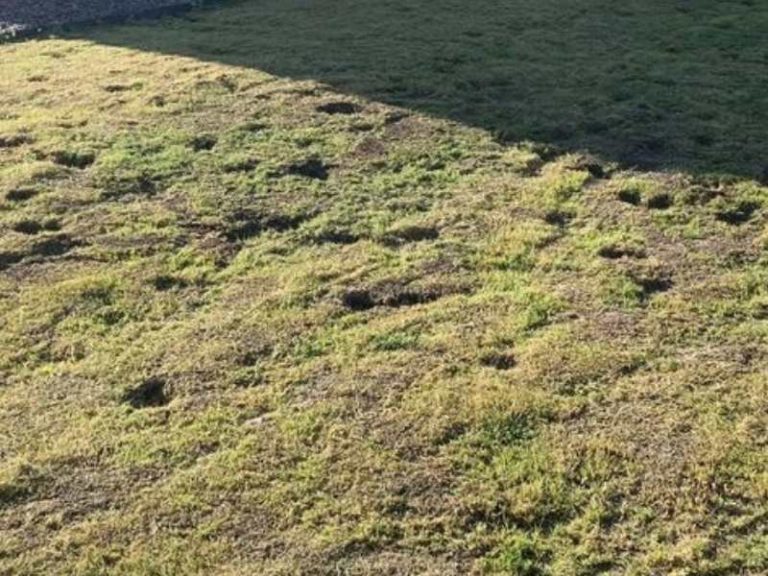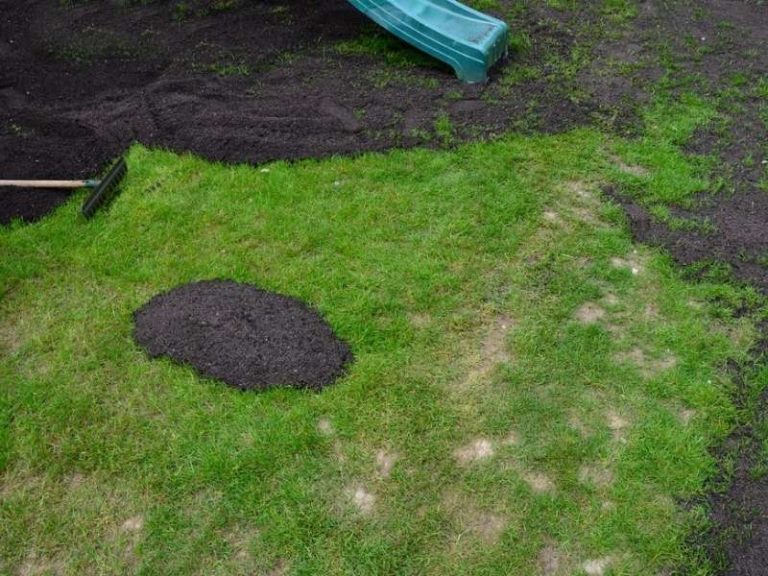Peat Moss Alternatives for Lawns
Sphagnum peat moss, simply peat moss, is made up of dead fibrous material. Peat moss is a result of the decomposition of mosses and other living material in peat bogs. It is beneficial since peat moss retains moisture and aerates soil for the growth of grass. However, peat moss makes soil highly acidic. Highly acidic soils encourage weed growth, hinder the growth of grass and prevent the existence of helpful organisms in the soil.
Peat moss has positive impacts on soil, but with drawbacks on your lawn. The eco-friendly alternatives; coconut coir, wood-based materials, or compost, serve the same purpose with more benefit to your soil. They help protect your soil, lead to better growth of lawn grass, and will conserve the environment.
Uses of peat moss for lawns
Sphagnum peat moss is not entirely awful. In fact, peat moss is used to grow plants that prefer a low pH. Ericaceous plants such as blueberries thrive in acidic conditions. Peat moss is also best for covering bare spots as it helps the grass grow. It has 96 minerals and nutrients beneficial for the growth of grass. A slightly similar material, sphagnum moss, has a neutral pH and comprises pure moss, unlike sphagnum peat.
If applied on your lawn, peat moss does the following:
Moisture retention
If your lawn has sandy soil, which is not good at moisture retention, use peat moss. Sphagnum peat moss retains water up to 20 times its dry weight. Once the peat absorbs water, it releases it slowly to your grass. Sphagnum peat moss acts like a sponge. Slow-release of water ensures your lawn grass is always hydrated.
Improves soil texture and drainage
Drainage is a significant issue in highly compacted soils like clay. Peat moss works to improve soil texture and composition. Healthy grass requires deep root penetration. By correcting soil drainage, peat moss prevents flooding, encouraging disease-free growth of grass.
Although it takes some time, sphagnum peat moss improves filtration and prevents water runoff.
Improved structure
Attaining the best soil structure in your lawn is best to achieve the growth of healthy and lush grass. Peat moss is made up of 95% organic materials. When the peat breaks down, soil particles also de-compact, improving airflow in the soil. Peat moss also adds nutrients to your soil due to its organic nature.
Additionally, sphagnum peat moss prevents leaching by holding on to fertilizer.
Peat moss alternatives and substitutes
Finding a healthier, eco-friendly alternative to peat moss is inescapable. Peat moss has negative impacts on the soil and your lawn. Luckily, affordable, natural options are readily available. These options are beneficial to your lawn and the environment. Expectedly, these substitutes have some shortcomings, but they’re not disastrous, and you can find a way around them.
Coconut coir
Coconut coir is a waste product of coconut husks. It is readily available since the harvesting of coconuts is a recurrent activity. Coir is eco-friendly, unlike moss harvesting that is detrimental to the environment. Coir also has better qualities than peat moss. It retains water more (because of high lignin and cellulose in the pith) and is a deterrent to fungi and diseases.
Coconut coir is also well-known for root support.
Benefits of using coconut coir
- It has a neutral pH (5.8-6.8) making it suitable for growth of grass.
- Coir holds more water due to its compact nature.
- It is all-natural and organic this enriching your turf.
- Coir is resistant to fungi and diseases.
- It is readily available.
Disadvantages of using coconut coir
- Coconut coir is slightly more expensive than peat moss in the US due to coconut importation costs.
Wood-based materials
Materials such as sawdust and wood fiber are suitable for use in your lawn. However, they possess the same acidic properties as peat moss. On the flip side, they add organic matter and are great for water retention. Besides, materials like sawdust are suitable for improving air circulation, which is ultimately good for the growth of grass.
While choosing wood-based materials, ensure you selected untreated, locally sourced byproducts.
Benefits of using wood-based materials
- They retain water because of their high substrate wettability.
- Wood-based materials improve water retention meaning you water your turf less.
- These materials also add organic matter to the soil which is inarguably beneficial for your lawn because of added nutrients.
- You can source for these materials locally.
- They are inexpensive compared to peat moss. In fact, some wood processing companies offer wood chips for free.
Disadvantages of using wood-based materials
- Wood fiber dries out on the surface compared to peat which might lead you to overwater your lawn.
- Some wood-based materials are processed chemically, which is terrible for turfgrass.
- They have low pH, which means they favor the growth of acidic plants only.
Compost
Compost is an excellent substitute for peat moss. It is also known as ‘black gold’ because of the numerous positive impacts it has on turfgrass. Acquiring compost is fast and easy. You can choose to make your compost heap in your backyard using kitchen waste, yard waste, and animal waste (if any). The tremendous nutritional value that comes with compost makes it a go-to substitute.
Benefits of compost on lawns
- Compost is packed with microbes and nutrients that promote lush and healthy growth of turfgrass.
- It is cheap to buy from local suppliers and easy to make at home, unlike peat moss that has to be sourced from peat bogs.
- It helps with drainage, thus preventing flooding in your lawn, which encourages existence of fungi.
- Compost attracts earthworms, which reduce soil compaction and promote root penetration of grass.
Disadvantages of compost on lawns
- Compost requires regular replenishing. It gets compacted and loses nutritional value over time. It requires replenishing annually.
- You must be careful about the source because poorly composted materials and immature compost will introduce pests and weeds to your turfgrass.
Pine needles
If you have pine needles in your garden, start treating them as less of a nuisance since they have various benefits. Pine needles make a good mulch option. Moreover, they are readily available, withstand wind and allow water infiltration into the soil in your lawn.
Pine needles have a convenient feature. They knit together. This feature is convenient against strong winds and excess runoff water.
Benefits of using pine needles
- You can collect pine needles from your backyard or get some within your locality. That lowers the cost and, in most cases, eliminates the need to purchase.
- Pine needles form a structure that withstands winds and runoff water. Therefore, you rarely need to replace them.
- The tannic acid in pine needles does not affect the soil pH.
- They are pest and insect repellent because of their scent.
Disadvantages of using pine needles
- Unlike peat moss, pine needles do not have good water-retaining properties. You have to water frequently to prevent thirst in your turf.
Rice hulls
Rice hulls are removed from rice when it’s being cleaned for packaging. Most people dispose of these hulls, but they can greatly benefit your lawn when preserved. Rice hulls are thin and very light in weight. Fortunately, they also have a neutral pH, thus act as an organic soil balancing material.
Benefits of rice hulls on turfgrass
- They help lighten the soil to prevent compaction.
- Rice hulls improve soil drainage and aeration, promoting healthy growth of grass.
- They are non-toxic and break down slowly to nourish your soil and grass.
- Rice hulls also act like mulch, retaining moisture and fending off weeds.
- They are inexpensive since most people discard them after cleaning rice for sale.
Disadvantages of using rice hulls
- When rice hulls decay, they take nitrogen from the soil. Therefore, using a nitrogen-rich fertilizer is unavoidable in this case.
Leaf mold
Unlike compost, leaf mold doesn’t require additional materials like kitchen waste. Collect fallen leaves from your yard and pile them. Regular turning of the heap aids in creating fertile and uniformly decomposed leaf mold. Leaf mold requires much less work than compost and harvesting peat moss from peat bogs.
Advantages of using leaf mold
- It is organic, therefore does not have chemical properties that could harm your turf.
- Leaf mold is very cheap since you can collect leaves locally all through the year.
- Leaf mold acts as a soil conditioner, making soil more fertile for growth of lush grass.
- Leaf mold increases the soil’s water-holding capacity.
- It also adds nutrients to soil because leaf mold acts as manure when it decomposes.
There are no drawbacks regarding the use of leaf mold in your lawn. Turn over your leaf pile to accelerate breakdown, which can be slow.
Peat moss has its advantages, but the negative impacts supersede the benefits. Moreover, acquiring peat moss is expensive and detrimental to the environment. Peat moss can also get scarce due to intense harvesting in peat bogs. The alternatives above are mostly cheaper and eco-friendly for your lawn.
Source and References
- Dr. Leonard Perry, Extension Professor, University of Vermont Extension: What is Peat Moss?
- The National Gardening Association: Sphagnum Moss vs. Peat Moss
- The Wildlife Trusts: Sphagnum Moss
- Dr. Leonard Perry, Extension Professor, University of Vermont Extension: Peat Moss or Compost?

![Can You Lay Sod Over Weeds? [How to Sod a Weedy Area]](https://lawnmodel.com/wp-content/uploads/2021/01/Can-you-lay-sod-over-weeds-in-lawn.jpg)



